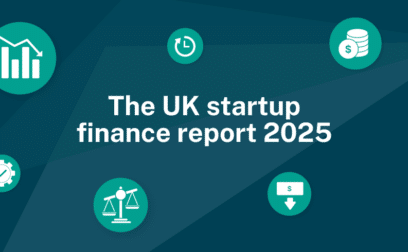Peer-to-peer lending (P2P) is a type of business loan by a large number of private investors (individuals, businesses or institutions) to your business, usually through an online platform. The idea is that lenders and borrowers get a better rate than they would through banks – plus decision lead times are significantly shorter. P2P is also known as debt crowdfunding or loan-based lending. Peer to peer lending matches those with money to lend with those who want to borrow, removing financial institutions from the equation and allowing lender and borrower to share on the saved over-head costs of borrowing/lending.
The process is quick and easy.
- A potential borrower completes an application form online to register interest.
- The peer network receives application, assess the risk profile and assigns a credit rating. This is usually a soft credit search which does not negatively impact on your credit score.
- When the application is accepted, the peer network send across different options from proposed lenders with varying rates.
- You asses which is the best for your business and choose accordingly.
If you want to lend money through a P2P platform, you’ll need to compare the different platforms online and then set up an account with one of them. The next step is to pay in funds by debit card or direct transfer. Set the interest rate you’d like to receive or agree to one of the rates on offer. You’ll then need to choose how long you want to lend the money for, which is usually between one and five years.
Depending on the platform you’ve chosen, you might be able to choose exactly who you want to lend the money to. But in most cases, your money will be divided between different borrowers to help reduce risk in case a loan is not repaid.
P2P lending platforms will use a credit reference agency to assess each borrower’s financial history and establish the risk of someone lending them money. The platform then assigns an interest rate based on their creditworthiness. Borrowers with higher creditworthiness might receive lower interest rates, while higher risk borrowers will attract a higher interest rate.
Some P2P lenders also offer an auto-bid feature, whereby you can set a limit on how much you want to lend each borrower and the lowest interest rate you’re prepared to lend at.
All being well, if your borrowers repay their money on time, you’ll make a profit on the amount you’ve lent to them.
There are a number of different types of P2P lending, as outlined below:
Lending to an individual
This is where P2P lending started and the process is pretty straightforward. Borrowers are individuals looking for a personal loan and you, along with other lenders, can choose to fund those personal loans. The interest rate paid on the loans depends on the individuals’ credit scores and the funds are repaid over an agreed period of time.
Lending to small businesses
With this option, your money will be lent to small businesses. In some cases, there might be additional security in case a company defaults. This might be in the form of a personal guarantee from the directors.
Lending against a property
This type of P2P lending is where you lend money to developers to enable them to build property. Your money will usually be secured against the property and once the development is complete and the property is sold or rented out, your loan will be repaid.
Peer-to-peer lending (P2P) is different to standard business loans. P2P matches private investors looking to invest their money with people who want to borrow it. In theory, compared to banks, P2P pays higher interest to lenders and charges lower rates for borrowers. The stronger your business profile, the lower the interest rate on your loan.
You apply for the loan directly to the P2P provider, even though technically you’re not actually borrowing the money from them but from a collection of private investors (individuals, businesses or institutions) who have signed up via a P2P lending company. On some platforms, these investors can choose the businesses they lend to. On other sites their money is automatically divided between a number of borrowers.
If you’re thinking about lending through a P2P platform, it’s important to consider the following:
- How much are you happy to invest? P2P platforms tend to have minimum and maximum investment amounts, so you’ll need to check these carefully when comparing your options. Note that under FCA rules, new investors cannot put more than 10% of their investable assets into P2P without seeking financial advice first.
- How much risk are you prepared to take? P2P lending comes with risk, so you need to be sure you understand these risks. Check what would happen if your chosen lending platform went bust or if a borrower defaulted on the loan. How robust is its provision fund?
- Are there any fees or other restrictions? Find out whether there are restrictions or fees involved if you want to withdraw money early and whether there are any management costs or platform fees.
- How creditworthy are borrowers? Some lending platforms might have a higher threshold for creditworthiness than others, so check carefully. Borrowers with a higher credit rating are more likely to repay their money on time.
Some of the advantages of P2P lending include:
- You could earn a higher rate of return.
- You’ll have flexibility in choosing the interest rate and length of the loan.
- Some P2P platforms have contingency funds to protect investors in the event a borrower defaults on their loan.
- If you invest via an Innovative Finance ISA, the income you receive from P2P lending is tax-free. You can invest up to £20,000 in an Innovative Finance ISA in the current tax year, but note that this allowance is spread across all types of ISA.
- Due to P2P having lower overhead costs or origination fees, you may find the interest rate to be more competitive.
Some of the disadvantages of P2P lending include:
- Investments are not covered by the Financial Services Compensation Scheme (FSCS), which means you could lose money if the P2P lending platform goes bust. However, all UK P2P lenders must be regulated by the FCA and keep lenders’ money in ring-fenced accounts separate from their own.
- If a borrower defaults on their loan, you could lose your investment.
- Your money only starts earning interest once it’s lent out, so if it’s sitting in your P2P account waiting for borrowers, you won’t be earning anything.
- It can be difficult to withdraw your money early as you usually need to sell your loan to another investor. This can take time and you might be charged interest or have to pay a fee.
Both P2P lending and crowdfunding involve giving money to other individuals or businesses. But the key difference is that P2P lending is a loan that needs to be repaid, while funds given through crowdfunding do not usually need to be paid back.
Usually peer-to-peer lending platforms offer unsecured business loans. This means you don’t need any security and you can set up your loan quickly. P2P is one of the more accessible forms of alternative finance.
An initial quote will not have an effect on credit score so it pays to shop around to look for the best rate.
Your business may benefit from competitive, fast and easily processed (48 hours) P2P loan. Borrow from £5,000 to £15m. The term length is usually from 1-5 years. The rates offered are from 6% typically (comparable to other unsecured loans) plus fee of approximately 1% of loan.
An alternative to P2P lending is investing in an Innovative Finance ISA. Although this is still a form of P2P investing, your money will be held in an ISA wrapper which means you won’t need to pay income tax on the interest. However, as mentioned, you can only pay up to £20,000 into an Innovative Finance ISA in the current tax year, and this allowance includes any funds you invest in other ISA types.
Another option is to buy corporate bonds. These are essentially a loan, but the borrower is the country or corporation that issues the bonds. You lend the money to the issuer and they repay you with interest.

































 yet? Register here!
yet? Register here!